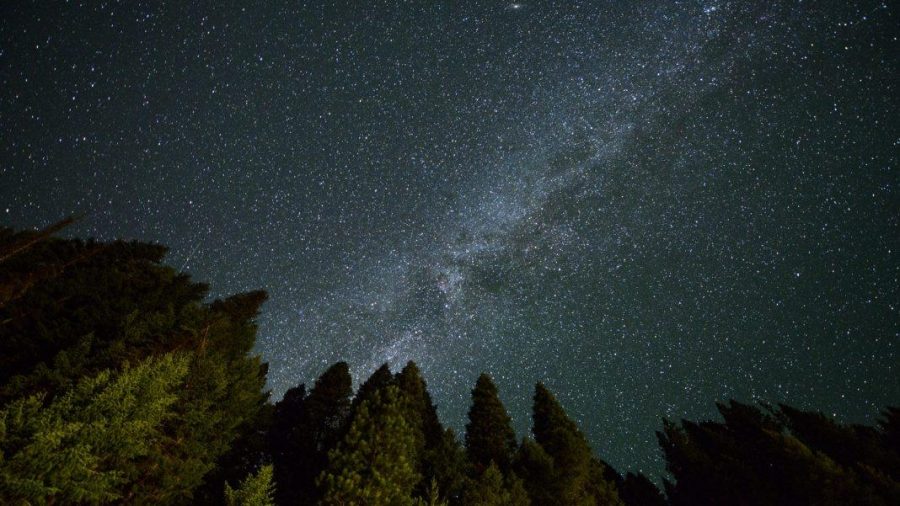Many Salt Lake City residents can’t remember the last time they saw the Milky Way or even the stars.
The Consortium for Dark Skies Studies (CDSS) at the University of Utah is the first academic center in the world dedicated to bringing together scholars, researchers and academics from numerous departments and fields of study to work together on an overlooked issue — light pollution. CDSS, housed in the College of Architecture and Planning at the U, is the nucleus of dark sky research for all of Utah. As it looks toward the future, it hopes to be a national center for dark sky research throughout the country.
The Importance of Dark Skies
The idea for CDSS started as a manila folder on John Barentine’s desk.
“There wasn’t really a focus on this subject as an academic research subject — there were regional centers in different parts of Europe, but they were kind of all over the place because the subject of light pollution is highly interdisciplinary,” Barentine said, who is now the director of conservation for the International Dark-Sky Association (IDA) and a member of the steering committee for CDSS. “The people who were making direct measurements of light pollution from satellites didn’t really know the people who were looking at impacts of light pollution on animal populations, [and those people] didn’t know any of the humanities people who were studying this from the human interaction perspective.”
Light pollution is the brightening of the night sky by man-made constructs, such as street lights and buildings. In places where light pollution is prevalent the stars are not easily visible, which is a phenomenon dubbed “disappearing dark.” This loss of dark skies presents a number of negative impacts on both human beings and organisms in surrounding ecosystems. The first problem, according to Stephen Goldsmith, acting co-director of CDSS and associate professor of city and metropolitan planning at the U, is the crisis of imagination.
“If we lose our access to being able to look up and imagine, ‘Who are we? Where are we? What is this incredible blue planet in the cosmos?’ the more that we lose our imagination, the more that we may lose our ability to be creatively responsive to challenges,” Goldsmith said. “There’s this emotional connection that we have to the dark sky.”
Another major issue that arises from the growing loss of dark skies is the migration patterns of other animals.
“There are many creatures whose navigation is dependent on their ability to use the coordinates of the dark sky to move through the world, whether it’s sea turtles or birds,” Goldsmith said. “Bird migration is terribly disrupted because of artificial light, and birds are an important part of our ecosystem.”
Public health issues are also created and affected by light pollution. Artificial lighting, specifically LED light, has been proven to cause sleep deprivation, throw off circadian rhythms, decrease attention spans and more through increased and sustained exposure. Goldsmith said light pollution plays a role in one of Salt Lake City’s biggest challenges — air pollution.
“We’re doing more research on the connection between light and air pollution due to a chemical reaction that happens between artificial light and the pollutants in the air, which actually makes those pollutants more toxic,” Goldsmith said. “When we have an inversion, the combination of the pollutants and artificial light actually creates a different kind of pollution.”
Protecting Dark Skies
CDSS addresses the problems caused by light pollution from many different angles: scientific, cultural, planning and architectural. It boasts more than 25 partners locally, nationally and globally, including the Natural History Museum of Utah.
Since receiving formal recognition in February, 2017, CDSS has grown in both size and in impact. In November 2018, CDSS will host the Artificial Light at Night (ALAN) conference, the annual meeting for a Europe-based organization of researchers and scientists to discuss the work that has been done and the work that continues to push the research forward. Also in November, CDSS will host the annual meeting for IDA, which is the authority on light pollution and the main organization focused on limiting light pollution worldwide.
CDSS has begun working with Utah’s Community Development Office to put together a “tool kit” for educating the public on the increased quality of life that comes with more dark skies and the importance of tourism in relation to the dark skies. These budding relationships are only the beginning for CDSS, which is looking to expand outside of Utah’s borders.
“My organization, IDA, will continue to be the activists that are out there pushing policymakers toward deciding certain things, but I would like the consortium to be viewed as a center or a source of reliable and objective information,” Barentine said. “CDSS should help people make objective decisions, especially on the policy front, and just inform individuals generally, even those who are not in a position to make decisions, because they’re voters and consumers and parents who are still making decisions on a more micro-scale.”
Utah was chosen as the center point for the organization for many reasons, but a major factor in the decision was the state’s unique positioning as one of the regions in the world with the most IDA-designated dark sky parks.
According to IDA’s website, an International Dark Sky Park (IDSP) is land, public or private, that “possess[es] an exceptional or distinguished quality of starry nights and nocturnal environment that is specifically protected for its scientific, natural, educational, cultural, heritage and/or public enjoyment.”
Those who visit these IDSP locations in Utah, including Canyonlands National Park, Cedar Breaks National Monument, Antelope Island State Park and more, will have the opportunity to see uninterrupted dark skies that are not visible in the cities and surrounding areas.
A comprehensive list of where to see dark skies in Utah or across the globe can be found at http://www.darksky.org/idsp/parks/.
“We have this wonderful geographic infrastructure, where no place else in the developed world this many people have access to the dark sky,” Goldsmith said.
@jacqmumford



